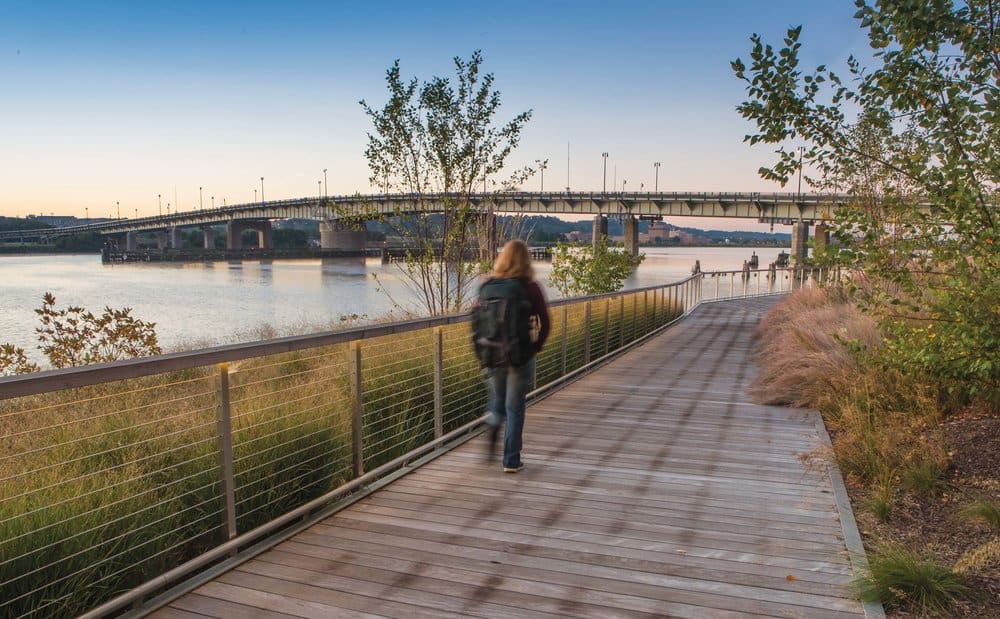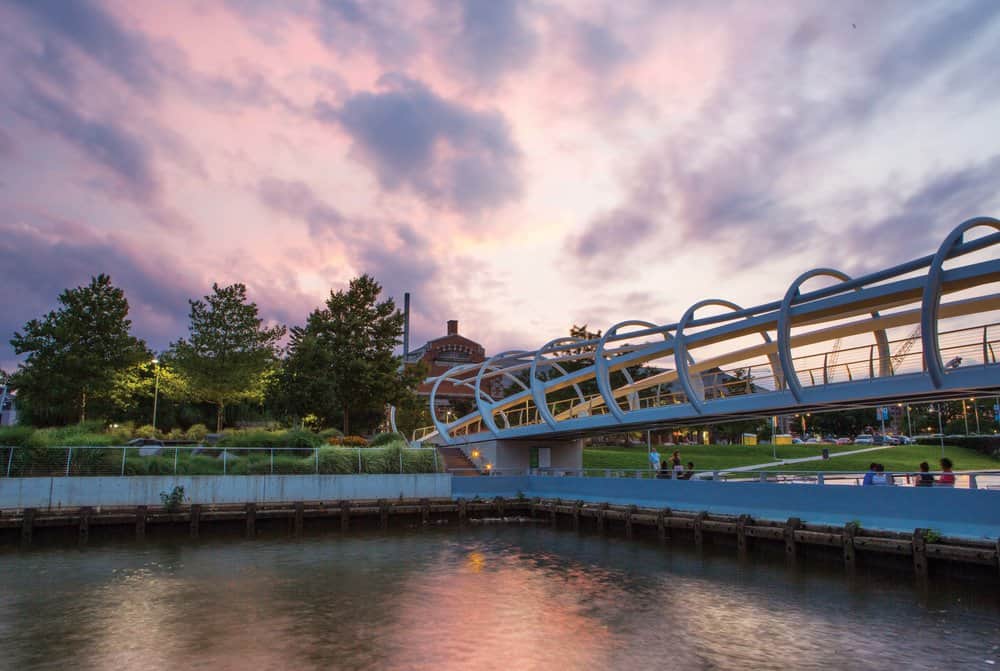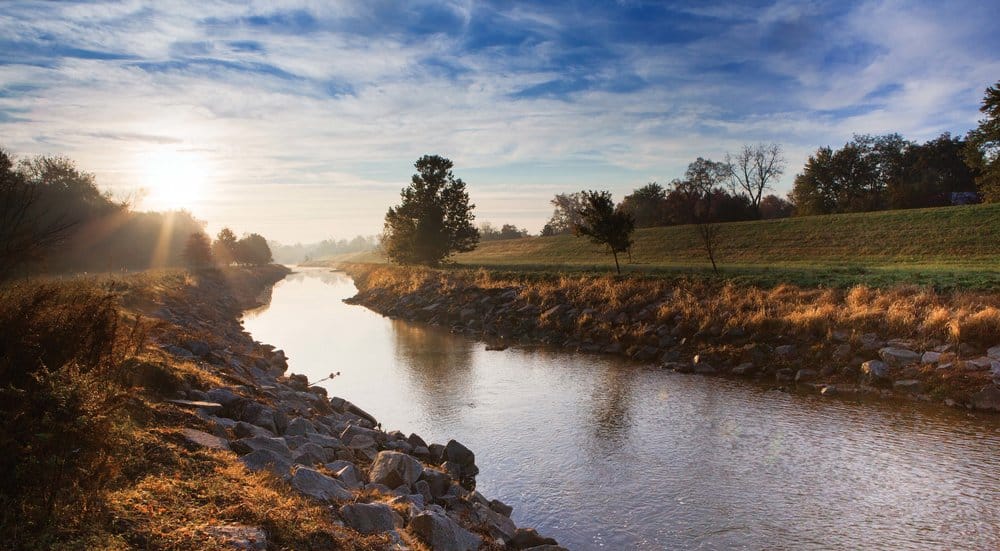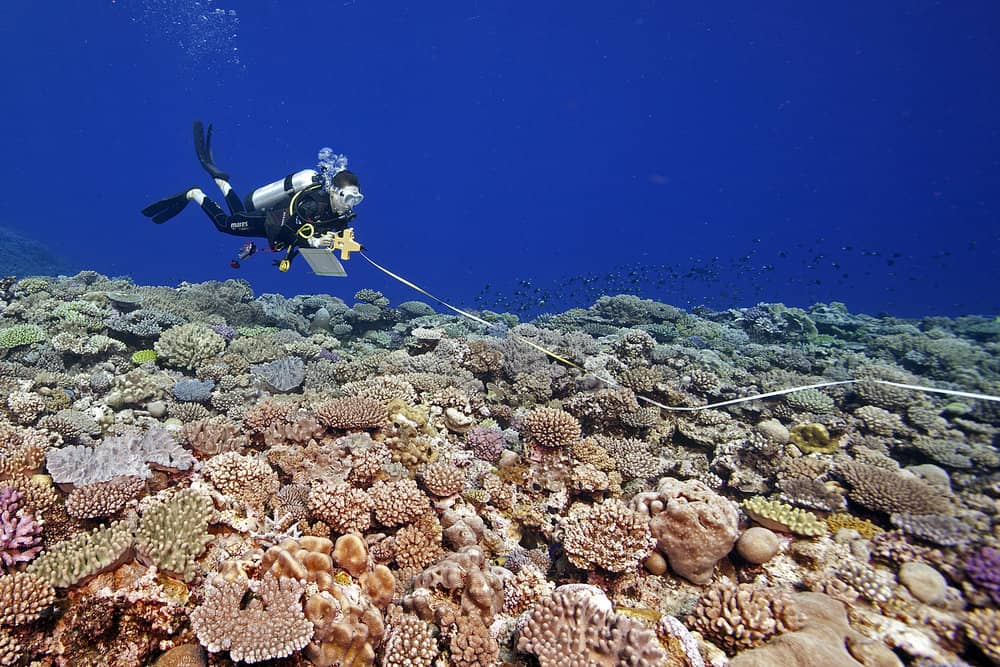story by Doug Siglin // photos by Krista Schlyer
Northwest Branch of the Anacostia River, Prince George’s County, Md. Photo by Krista SchlyerIn the summer of 1608, Captain John Smith and a small crew from Virginia’s Jamestown Colony were the first Europeans to sail up the Potomac to visit the Anacostia River. They found a deep, clear, and biologically rich tidal estuary fed by the fresh water of the Piedmont. Native Americans had been living along its shores for thousands of years, sustained by its bounty.
The four centuries following Smith’s visit were not kind to the Anacostia. In the early 1700s, the estuary began to silt up from land-clearing for agriculture, particularly tobacco. In 1791, when President Washington decided to locate the nation’s capital around the Anacostia, he set something worse in motion—contamination from city life and, eventually, industrial toxins.
By the late 1800s, the Anacostia estuary had become a shallow, polluted stream surrounded by pestilential mud flats. The U.S. Surgeon General reported in 1895 that 98 percent of the workers at the Washington Navy Yard had been sick with malaria. A half-century-long Corps of Engineers project to dredge and channelize the river from the Maryland border to the Potomac was a temporary reprieve from the silt, but not the contaminants. By the 1980s, continuous erosion, sewage overflows, industrial chemicals, trash, and urban street runoff made the Anacostia one of America’s most abused and polluted waterways.

Today, the Anacostia River is on its way back. Nearly three decades of concentrated attention by governments, nonprofits and community advocates has reversed the long decline. The first phase of a massive project to expand the capacity of the District’s sewer to prevent sewage overflows was completed in March. Another huge project is underway to study and eventually remove or isolate the riverbed’s legacy of industrial toxicity. D.C.’s first-in-the-world stormwater retention credit trading system is reducing the impact of erosion and contamination from street and alley runoff. The river’s tributary streams within the District have been fully restored, and trash has been significantly reduced by anti-dumping enforcement, a styrofoam food container ban, a plastic bag fee, and other measures.
Maryland’s Prince George’s County and Montgomery County, which are home to many of the Anacostia’s tributary streams, are doing their part with aggressive water quality programs of their own. Prince George’s County’s innovative public-private partnership to more cost-effectively reduce stormwater pollution and erosion is especially noteworthy.
A remarkable feature of the Anacostia is the parkland along its banks, much of which was created by the Corps’ dredging project. One hundred years ago this summer, Congress decreed that nearly all of the Anacostia’s shoreline would be set aside as one of the nation’s first federal parks. At more than 1200 acres, Anacostia Park is larger than New York City’s Central Park, San Francisco’s Golden Gate Park, or Chicago’s lakefront Lincoln Park. The National Park Service, which has managed Anacostia Park since the 1930s, acknowledges that the huge park has been neglected (including a 25-year period as a burning trash dump), but the process of transforming it into a “signature urban park” is on the horizon.

The rapidly improving river and the Anacostia Park centennial have inspired the National Park Service and the D.C. Council, as well as the Montgomery County Council, the Prince George’s County Council, and the Metropolitan Council of Governments to declare 2018 the “Year of the Anacostia.” According to its website (yearoftheanacostia.com), it is a “yearlong invitation to honor history, celebrate progress, and enjoy the Anacostia River and its surroundings while envisioning an inspiring future.”
The inspiring future seems close at hand. A culture of safe river recreation—boating, paddling, paddle-boarding and even swimming—is beginning to emerge at the foot of Capitol Hill. Beyond the river and park improvements, the relatively small privately-held shoreline area is the new Capitol Riverfront neighborhood, D.C.’s fastest growing and most dynamic. It is home to National Stadium, the host of this year’s Major League Baseball All-Star Game, and the brand-new Audi Field, home of Major League Soccer’s DC United. The Capitol Riverfront boasts nearly 10,000 largely upscale residents, 48 restaurants, and over six million feet of retail and commercial space. The Yards Marina, managed by Baltimore’s Living Classrooms Foundation, features 50 slips divided between long-term and short-term use, a water taxi dock, an education dock, and a paddler dock for smaller boats. It is only steps to the new restaurants, retail shops and Nationals baseball.
If Rip Van Winkle were to wake up from a 20-year sleep on the Anacostia’s banks, he would be mightily confused. The river and the 1,200-acre park in the heart of the Nation’s Capital have some distance to go before they are fully restored, but they are on the way back.
Doug Siglin is the Executive Director of the Anacostia Waterfront Trust, a nonprofit organization working to create a world-class waterfront on the Anacostia River in the nation’s capital.




